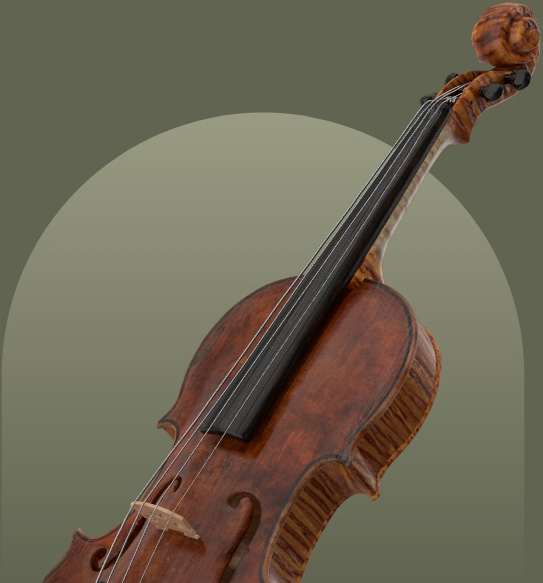John Dilworth
SMITH, John Born 1859 Fauldhouse, Scotland UK, died 1941 Winnipeg Canada Apprenticed as a joiner and cabinet-maker. Pupil of J. Carr in violin making, guided by P. Davidson’s The Violin; a technical analysis published in Glasgow 1871. Established professionally in Glasgow c.1904, using commercially available Whitelaw amber varnish. Emigrated to Canada shortly thereafter. Active in Winnipeg at 617 Furby Street. Stradivari- and Guarneri-derived models. Very flat arch but full to the edges. Shaded golden-red varnish. Excellent imported tonewoods used. Made by John Smith Falkirk / No. 1893 Made by John Smith / late of Falkirk / Glasgow / no 54 14/1/1905 Made by John Smith / 617 Furby St. Winnipeg / Late of Glasgow & Falkirk, Scotland
William Meredith Morris
He was born at Fauldhouse, Linlithgowshire, April 26, 1859, and he works now at 40 Garthland Drive, Dennistoun, Glasgow. He worked for ten years at 28 Cockburn Street, Falkirk, where he made about fifty violins and a few violas and violoncellos. He is a pupil of John Carr, music teacher and violin-maker, of Falkirk. Mr. Smith is amongst the three or four who form the vanguard of the army of modern Scottish makers. He works on various models, but chiefly on one of his own adoption, the measurements of which are as follows : — The arching is a trifle more pronounced than in the works of Strad and Joseph, and is almost in the manner of Gasparo da Salo. There is also a strong Brescian feeling about the sound-holes, only they are of a type distinctly more advanced than those of the old school. The angle of inclination of the sound-holes, and their quasi-Gothic upper arch, lend this part of the work freshness and vigour which catch the eye of the expert. The work is beautifully finished, and the varnish carefully laid on and highly polished. A feature worthy of special notice is the shoulder, or base of neck, which is finished in a manner that enables the player to shift with comfort and ease. Too much attention cannot be paid to violin construction from the player’s point of view, with due regard, of course, to the harmony of form and proportion. Mr. Smith’s scroll is a magnificent piece of carving, and reveals strength of mind and mastery of the gouge. The tone is large and incisive, and when time and use have mellowed it down, it will, no doubt, be rich and sonorous. The colour of the label paper is dark yellow.
George Hart
Er war der Sohn eines Maschinenbauers und erlernte regelrecht die Tischlerei. Im Jahre 1891 begann er sich auf das Geigenmachen zu verlegen und wurde ein Schüler John Carr’s. Er verarbeitet schönes, altes Holz und nimmt zu den Klötzen Cedernholz. Er ahmt im Allgemeinen Stradivari nach und verwendet rothgelben Bernsteinlack.
